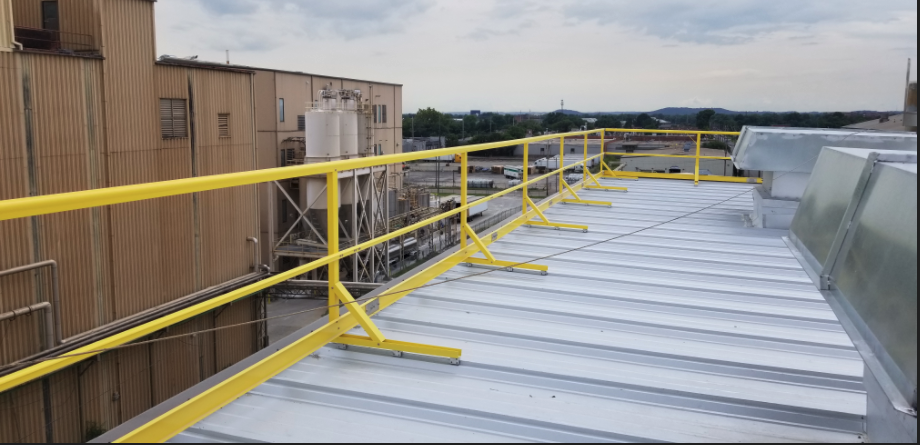When installing, repairing, or replacing handrails and guards throughout a commercial building, contractors can use terms and vocabulary that may seem intimidating. Luckily, we are here to help! Knowing some of these handrail and guard definitions will come in handy when hiring a contractor to work on them.
Load Requirement
Load requirement refers to the amount of weight that the handrail can withstand. Uniform load applies to the load capacity of the railing per foot. The weight capacity of a railing in a single point of the handrail is defined as a concentrated load of the rail. Building owners and managers can manage load requirements depending on the materials used.
Toe Board
A toe board is a part of the guardrail placed on the walking surface that serves as a protective barrier to notify people of potential hazards, such as tools or other objects falling from elevated surfaces or someone falling from a floor opening.
Top or Midrails
Top rails are the part of a structure that should always be elevated and make up more handrail and guard definitions to know. Top rails provide support for people when walking, climbing stairs, or navigating any angled platform. Midrails refer to the railing between the top rail and the surface. They provide additional reinforcement for the railing and can also double as support for small children.
Handrail and Handrail Systems
Handrail and guard definitions also include knowing what forms true handrail systems. A handrail is a rail fixed across staircases and other elevated surfaces to support people while climbing or walking. A handrail system is a barrier in the form of balusters or sheets of commercial glass, on which the top rail is affixed to provide additional support for users.
Handrail Continuity
Handrail continuity refers to how far the railing goes up. In accordance with OSHA Guidelines, the handrail must continue along the entire length of the stairway or ramp.
Handrail Size Limitations
Handrails must be within ¼” – 2” in diameter, as this is the size that provides equivalent graspability. Railings must be between 34 to 38 inches high measured across the sloping plain so that it runs smoothly along the stairway or ramp.
Equivalent Graspability
Equivalent graspability is usually applied to handrail gripping surfaces that have a non-circular cross-section. These handrails must have a diameter of a minimum of 4” and a maximum of 6”. The cross-section should have dimensions that are no more than 2 ¼”.
Bracket Clearance
Bracket clearance refers to the required clearance between a handrail and other building elements. Clearance is different for horizontal and vertical brackets. Horizontal clearance must be 1 ½” “ between a wall and railing and have a maximum of 4 ½” projection.
Vertical Clearance
Vertical clearance must be 1 ½” between the underside of the handrail and bracket arm. However, the International Code Council (ICC) and Americans With Disabilities Act (ADA) have since reduced it to ⅛” for each ½” over 4” of the railing.
Railing Extensions
Railing extensions refer to the amount the railing extends from the ramp runs on either end of the handrail. Railing extensions must extend at least 12” from either end of a wall-mounted ramp rail as well as for staircases.
Handrail Returns
Handrail returns are the individual segments that connect the end of the railing to the wall and another part of the handrail and guard definitions building owners need to know. They help protect people from the sharp edge of the rail. The returns traditionally should be towards the wall. However, there has commonly been a gap between a return and the wall. But this is usually frowned upon by inspectors.
Know the Handrail and Guard Definitions to Ensure Your Building Adheres to All Required Codes
Handrail and guard definitions can be challenging to memorize. But hopefully, this served as a handy little guide for them. The right partner will have several resources to help you become more knowledgeable about all aspects of commercial building maintenance. Connect with The Valcourt to schedule a consultation now.
